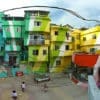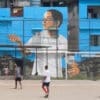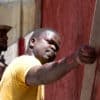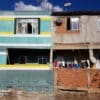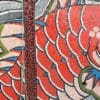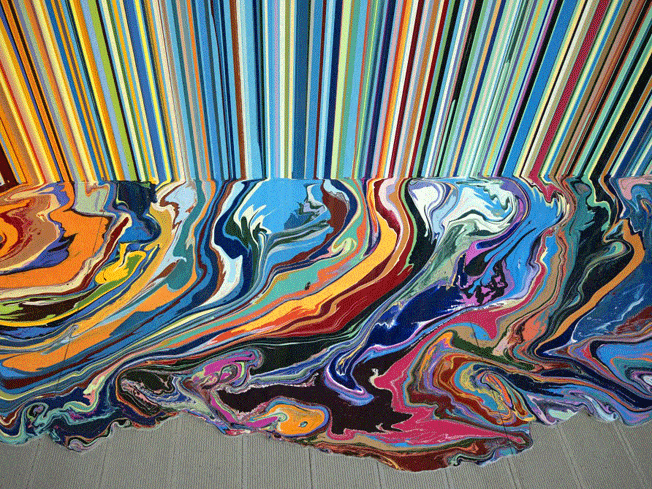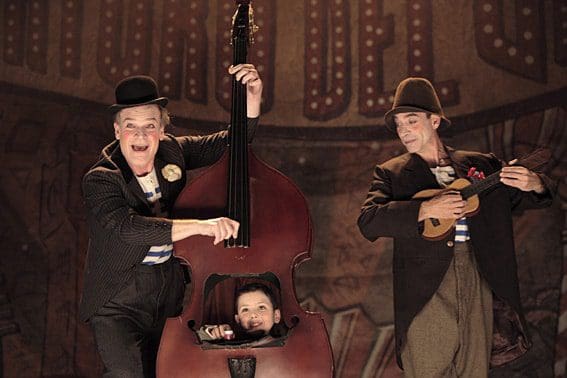Favela Painting: Community Art for Social Change – words Martha Bird
The ability of art to alter and challenge perception, to empower people, and to create change is exceptional, but is often underestimated and dismissed. In our current tumultuous political climate, it feels naive to suggest that through the power of paint we can change the world, but at Rotterdam’s Kunsthal gallery the work of the Favela Painters makes the potential of art abundantly clear.
The story behind the beautifully colour saturated exhibition, entitled Favela Painting: Community Art for Social Change, began when Jeroen Koolhaas and Dre Urhahn, alongside the residents of Rio de Janeiro, decided in 2008 to combat the prejudice that surrounds these slums by training local people to paint a 7,000 meter section spanning 34 houses. Bright striped pinks, blues, yellows, and greens pop out of the images that line the gallery walls, making the community look more like an Instagram opportunity hotspot than the centre of a Brazilian slum. This is the third project that the Favela Painters have undertaken, with projects now across the globe, including in Haiti, the U.S. and a partner project in Guatemala.
The connotations of prejudice that accompany the violence, poverty, and socio-economic despair in Rio’s slums has a huge impact on those living there. By training and employing local people in their work, the Favela Painters are able to empower those involved, as well as being an invitation for much needed – but rarely given – positive attention to this deprived space. It’s an incredible example of the power of community art; a clear expression of confidence through colour. In the images that line the gallery’s walls the sun reflects off the gorgeous mosaic tiles that line the streets, radiating a warmth and a joy that epitomises positivity. To radically alter perceptions of a poverty stricken place through paint may sound like a ridiculous dream, but the Favela Painters have proved the power of communities working together to improve their living space.
The majority of the projects that the Favela Painters undertake are situated in socio-economically deprived areas, so it surprised me when I saw the Netherlands listed on their website. As a response to the refugee crisis in 2016, the former Bijlmerbajes prison in Amsterdam was turned into a temporary living facility for up to 1,000 refugees from Syria, Eritrea, Iraq, and Afghanistan. Although this sounds like a great solution to a housing problem, it disregards the humanity of those who – after an unbelievably traumatising experience – would then have to live in this bleak, grey, sky scraping former prison. The Favela Painters’ message of rejuvenation and empowerment through community art led them to set about transforming these grey towers into a bright, beautiful, vibrant place. By providing training and jobs to those who work on their projects, there is a sense of security in the present, but also a sense of hope for the future. Not only will the former prisons, slums, and housing projects continue to be beautiful places to live once the programmes are completed, but those involved then carry with them newly acquired capabilities. Through this art connections are forged, skills are taught, and pride is encouraged in societies that are typically disregarded and under appreciated.
Whilst the power of creativity feels more abstract in the rest of the Kunsthal gallery, this beautiful exhibition really shows what art can do. The Favela Painters empower those in socio-economically deprived areas by forcing others to reconsider their conception of spaces that are traditionally outside the mainstream art world. Their incredible projects now have global reach, with their foundation having become a world leader in art for social change.
Check out their inspiring work here for more information: https://favelapainting.com

